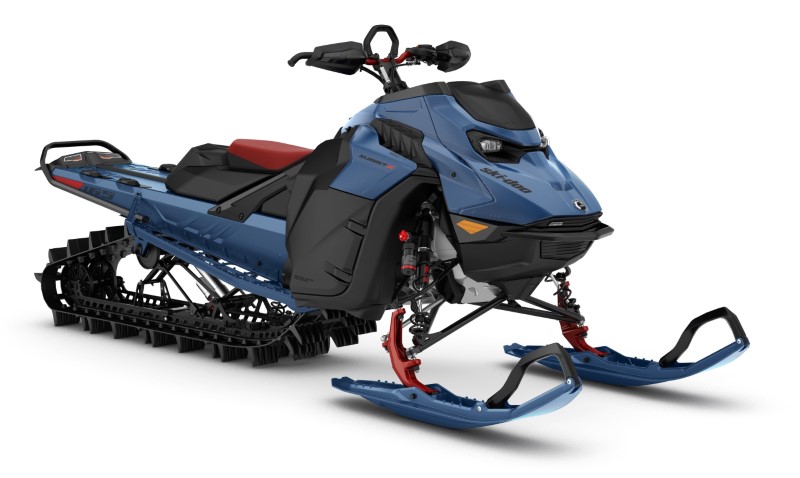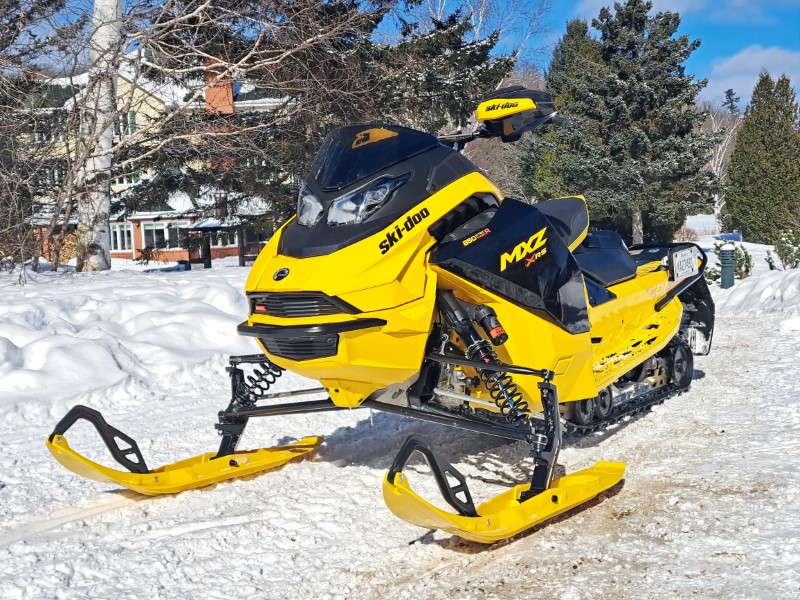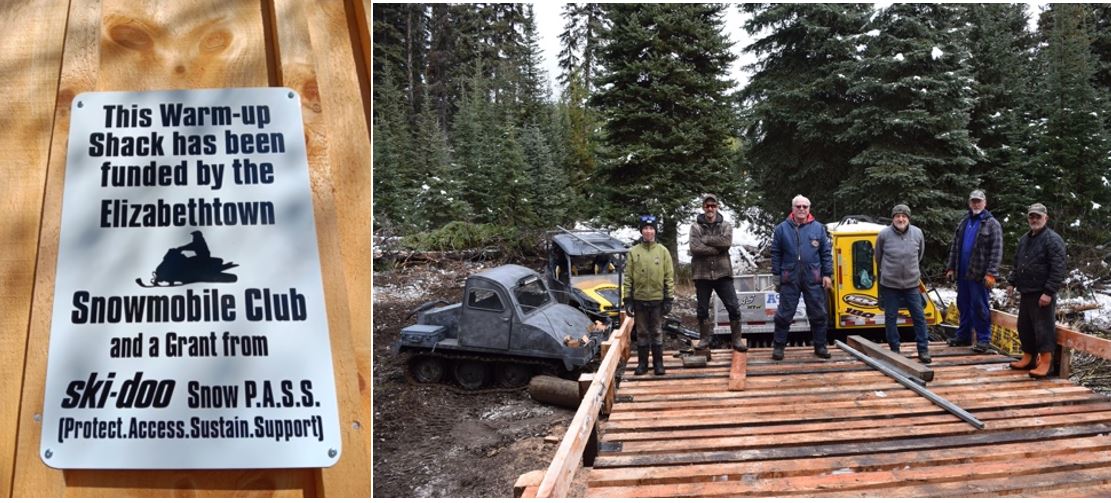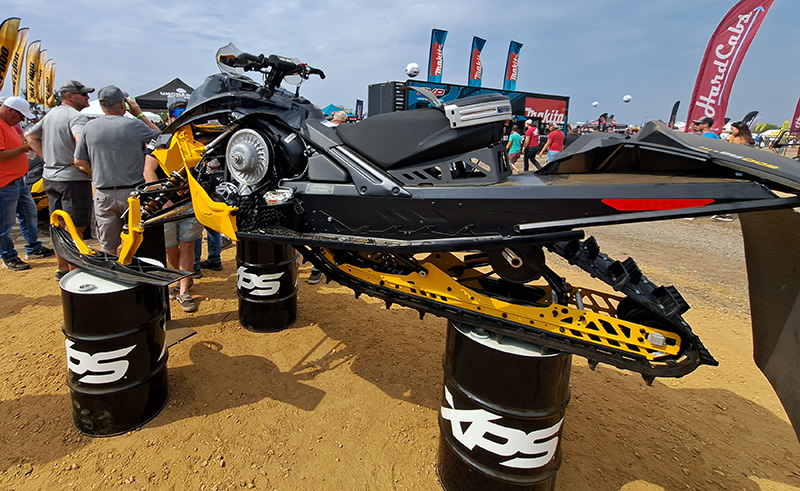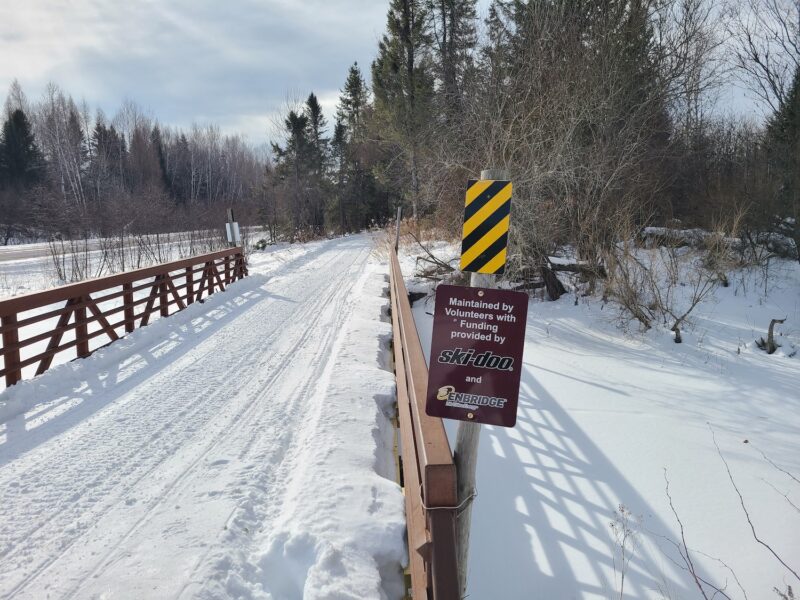Ski-Doo has proven over the past few years that it isn’t content to just sit on its laurels while it enjoys the No. 1 position in market share. Recent technological advancements from the Canadian snowmobile manufacturer include E-TEC direct injection technology, the lightweight REV-X chassis, and today Ski-Doo announced the all-new rMotion rear suspension for select 2012 MX Z models.
Initial impressions after we took a test ride at a super secret Canadian location last month make us confident in saying that it is likely to raise the bar in terms of ride comfort and capability for comfort and adjustability. Further testing this spring against other machines will help us form a more concrete opinion.
The rMotion is a rising rate design, meaning the suspension gets progressively firmer as it’s squeezed farther into its travel. So yes, this is Ski-Doo’s answer to the Polaris Rush that came out for 2010, but Ski-Doo engineers went with a conventional design that keeps the suspension within the track that they say keeps the center of gravity lower and promotes more effective heat exchanger performance. The rMotion suspension will be standard on all 2012 MX Z X and MX Z X-RS sleds.
To a casual observer, the rMotion is a design that looks similar to the Ski-Doo SC-5 rear suspension, but it’s actually quite different. For starters, the front torque arm is 4.5 inches longer than the arm on the SC-5. This means the arm attaches farther back on the slide rails, and the resulting geometry is what helps this suspension provide a supple ride over the choppy bumps while still being capable to absorb big hits while ridden aggressively.
Rear mounting linkages are new to Ski-Doo suspensions (look for the aluminum arm that partially covers the upper wheel in the top photograph), but they’re similar to designs used by other manufacturers. Ski-Doo engineers say this mount system is another key component of the suspension’s design and ride quality. It increases suspension travel and reduces weight transfer.
Easy adjustability has been built into the rMotion, too. Riders can select from two mounting points for the rear shock’s eyelet. The stock, lower mount point is the high-performance setting, the upper mount is the sport setting, generally reserved for riders looking for softer suspension action. Another note about this shock: It’s inverted, meaning the body is bolted to the rear torque arm to reduce unsprung weight. This unconventional mount makes it easier to access the shock’s clicker, too.
Coupler blocks are a new tool-less design that can be adjusted with gloves on the hand. Riders can simply push the red, spring-loaded button and turn the block to adjust weight transfer and ride quality.
The optional Quick Adjust system is a hydraulic adjuster for the torsion springs. A large dial mounted on the left running board behind the driver is easy to twist so riders can set spring preload for their weight. The right running board has a similar unit for the rear shock’s reservoir and compression damping clicker. The Quick Adjust system has 40 percent more range than standard rMotion, offering more tuning flexibility.
During our test ride, we were especially impressed with the suspension’s performance in stutter bumps. It reduced feedback to the chassis and our body, enabling us to take the bumps at a faster pace than the SC-5-equipped snowmobile that was also there.
Running hard over a section with deeper holes, the rMotion kicked and bucked less and helped us maintain control. Cornering with the machine was excellent, indicating that the precise steering of earlier REV-XP machines has been preserved with the new rMotion rear suspension. Skis stayed flat and they held their line without pushing. Shock clicker, spring preload and coupler block settings were as easy to adjust as Ski-Doo promised.

